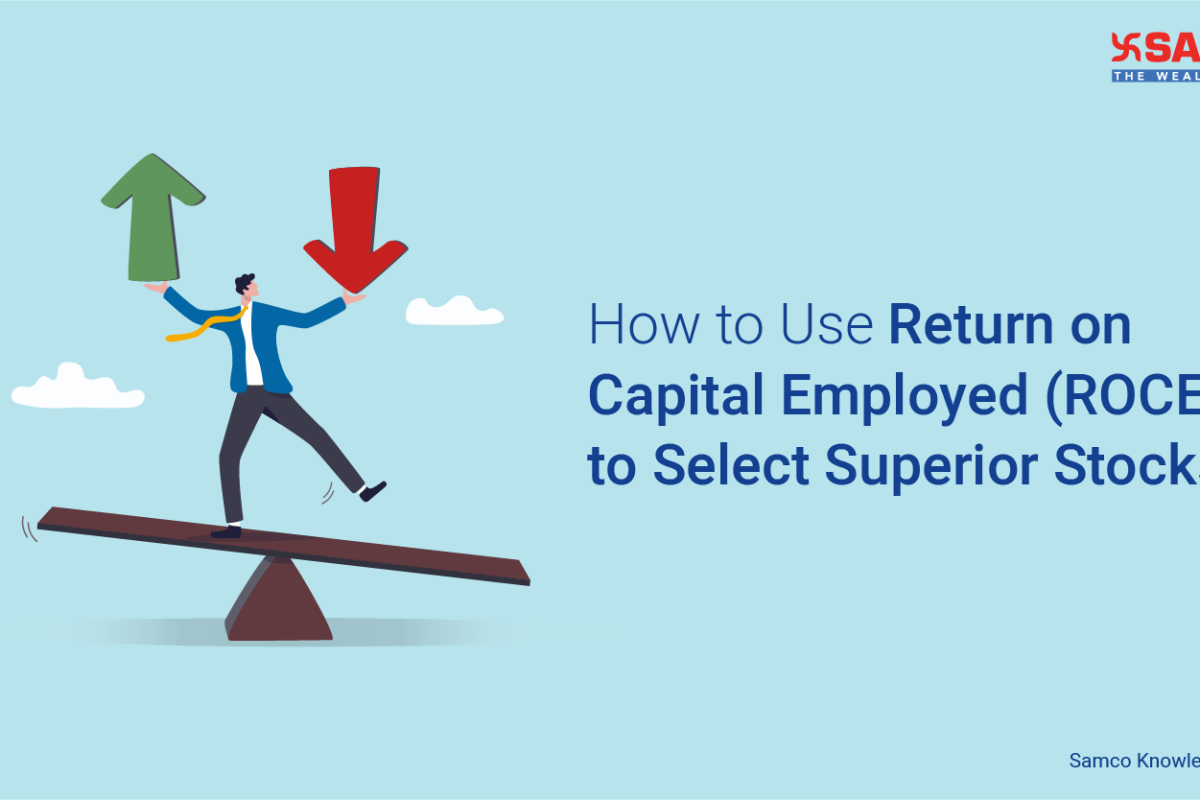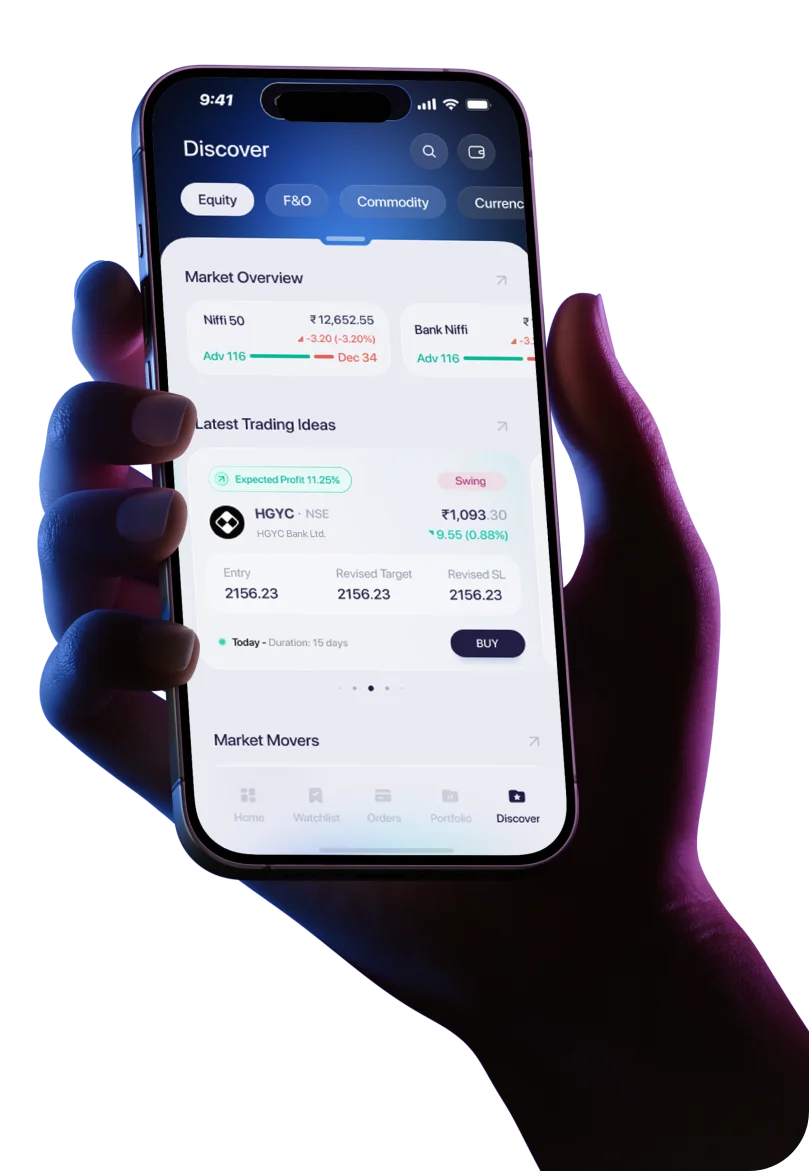If you are a long-term investor, you must always evaluate company performance thoroughly before committing your capital. When analysing a company, it is important to focus on financial ratios. These ratios help assess profitability, efficiency and overall financial health, allowing you to make informed investment decisions.
One of the many vital metrics you must look into is the return on capital employed (ROCE). But what is ROCE in stock market analysis, and why does it matter? In this comprehensive guide, we will explore the concept in detail and delve into the ROCE formula to see how it is calculated.
What is ROCE in Stock Market Analysis?
Return on capital employed, or ROCE, is a financial ratio that indicates a company’s profitability and the efficiency with which its capital is employed. To put it simply, ROCE tells you how well a company is generating profits from the capital it has invested in the business.
The metric is especially useful when analysing companies in capital-intensive industries, such as manufacturing, energy or infrastructure, where large amounts of money are tied up in assets and operations.
Since the return on capital employed goes beyond net profits and into operational efficiency, it is a go-to tool for many long-term investors looking to evaluate company performance.
ROCE Formula
With the concept of ROCE explained, let us now look at the mathematical formula that is used to calculate the metric. Unlike other financial metrics, the ROCE formula is quite simple, which is as follows:
ROCE = (EBIT ÷ Capital Employed) x 100
EBIT stands for earnings before interest and taxes. It is also known as the operating profit since it is derived by deducting all possible operational expenses from revenue.
Capital employed, meanwhile, represents the total amount of capital used in the business. It can be calculated using either of the following two mathematical formulas.
Capital Employed = Total Assets – Current Liabilities
Or
Capital Employed = Equity + Non-Current Liabilities
Understanding both of these components is crucial for using the ROCE formula accurately. EBIT gives insight into operational performance, whereas capital employed represents the resources used to generate that performance.
ROCE: Example Calculation
Now that you know what ROCE is in stock market analysis, here is a hypothetical situation to help you understand how to utilise the ROCE formula to calculate the metric manually for a company.
Assume there is a company, ABC Limited. The company’s financial performance for the year 2024 - 2025 was as follows:
- Revenue from Operations: Rs. 80 crore
- Operational Expenses: Rs. 30 crore
- Total Assets: Rs. 300 crore
- Current Liabilities: Rs. 100 crore
Now, using the above values, let us first determine the two components used in the ROCE formula: EBIT and capital employed.
EBIT = Revenue from Operations - Operational Expenses
EBIT = Rs. 80 crore - Rs. 50 crore
EBIT = Rs. 50 crore
Similarly, capital employed can be calculated using the following mathematical formula:
Capital Employed = Total Assets - Current Liabilities
Capital Employed = Rs. 300 crore - Rs. 100 crore
Capital Employed = Rs. 200 crore
Now that we have computed both the components, let us input them in the ROCE formula to determine ABC Limited’s return on capital employed.
ROCE = (EBIT ÷ Capital Employed) x 100
ROCE = (Rs. 50 crore ÷ Rs. 200 crore)
ROCE = 25%
As you can see, ABC Limited earns a 25% return on the capital it employs, which is a strong indicator of efficiency and profitability.
Importance of ROCE in Stock Market Analysis
Return on capital employed is one of the key metrics that long-term investors focus on when they evaluate company performance. Here are some compelling reasons why the ROCE is considered significant in fundamental analysis.
Assesses Operational Efficiency
Return on capital employed is a direct measure of how efficiently a company is using its capital to generate profits from its core operations. The metric focuses solely on operational performance by not taking the tax and interest expenses into account.
A high ROCE suggests that the company’s management is making smart and productive use of both equity and borrowed funds. This efficiency is especially important in industries with high fixed costs or substantial capital investments, where mismanagement can significantly impact profitability. Furthermore, long-term investors often view consistently high ROCE as a sign of strong leadership and sound business fundamentals.
Investment Comparison Tool
One of the biggest advantages of ROCE is its ability to make comparing companies within the same industry easier. Since it accounts for both debt and equity, the metrics offer a complete view of how a business is utilising its capital. This makes it easier for investors to compare performance across companies with different financing strategies or capital structures.
For instance, a company with high debt might still show a healthy ROCE if it is generating substantial operating profits. This aspect makes ROCE an essential metric for screening and benchmarking potential investments.
Long-Term Decision-Making
Long-term investors often seek companies that can generate consistent and sustainable returns on their capital over time. ROCE is particularly useful in this context because it reflects profitability. A company with a stable or growing ROCE trend over multiple years is generally considered to be managing its resources well and is likely to enjoy success in the long run.
ROCE vs. ROE: Key Differences
In addition to the return on capital employed, long-term investors also use return on equity (ROE) when they evaluate company performance. Although both these ratios might seem very similar, they are far from it. In fact, here is a comparison of ROCE vs. ROE, highlighting the key differences between the two metrics.
Parameters | Return on Capital Employed (ROCE) | Return on Equity (ROE) |
Focus | ROCE focuses on the company’s overall efficiency in generating profits from the total capital employed by it. | ROE concentrates on how efficiently the company generates profits using just the shareholders’ funds. |
Debt Impact | ROCE takes into account both equity and debt, reflecting the complete capital structure of the company. | ROE does not consider debt and only measures returns generated on shareholders’ equity. |
Formula | ROCE is calculated by dividing earnings before interest and tax (EBIT) by capital employed. | ROE is calculated by dividing net income by shareholders’ equity. |
When to Use | ROCE should be used when an investor wants to assess how well a company uses its total capital, especially in capital-intensive industries where debt plays a significant role. | ROE is best used when evaluating businesses with little to no debt or when focusing on returns to equity shareholders. |
Pros and Cons of Using ROCE
As a long-term investor, being aware of the advantages and disadvantages of using ROCE is essential when you evaluate company performance.
Benefits of Using ROCE
- Ideal for Capital-Intensive Businesses: ROCE gives a more accurate picture for companies that heavily rely on asset investments.
- Helps in Sector Comparison: Since it accounts for both equity and debt, it enables fairer comparisons across companies with varied capital structures.
- Focus on Core Operations: By using EBIT, ROCE isolates operational performance from financing and taxation-related decisions.
Drawbacks of Using ROCE
- Affected by Accounting Policies: Changes in depreciation or asset valuation can impact ROCE significantly and paint a different picture.
- Not Suitable for All Industries: In sectors like tech or services, where capital investment is minimal, ROCE may not be the best indicator of profitability or operational efficiency.
- One-Time Gains Can Skew Results: Non-operating income may inflate EBIT if not adjusted properly. This can lead to the return on capital employed being erroneously inflated.
Conclusion
If you are a long-term investor, understanding the importance of ROCE in stock market analysis is essential. It helps you gauge how effectively a company is generating profits from its total capital base.
That said, while ROCE can be a powerful tool, it has certain limitations that you must consider. Therefore, it is advisable to use it in conjunction with other metrics and qualitative techniques to evaluate company performance. This way, you can get a holistic and comprehensive view, which is essential for making smart investment decisions.




 Easy & quick
Easy & quick
Leave A Comment?